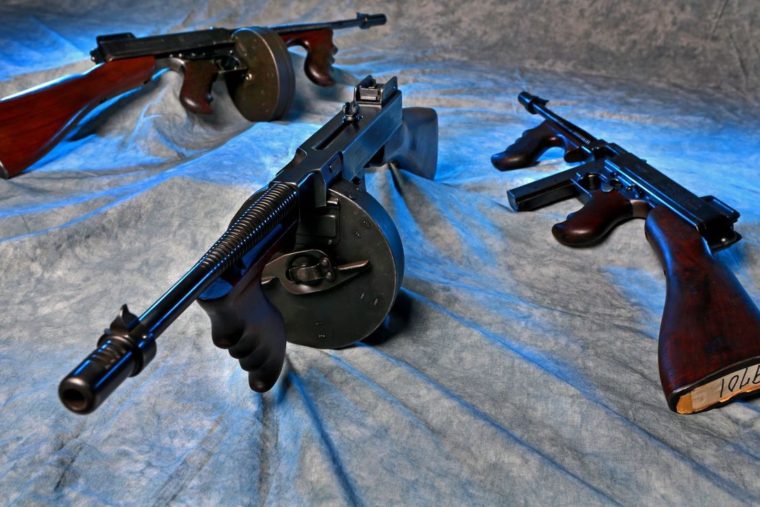The St. Louis Police Department is selling a stash of guns that bring to mind Prohibition-era gangsters for cash to put new a handgun in every officer’s holster, plus arm the department with a number of AR-15 rifles.
The rifles and about 1,525 new 9 mm Beretta handguns will be paid for largely by the sale of 27 Thompson submachine guns, some dating to the 1920s. The proceeds from the vintage weapons will cover about half of the new arsenal — the first shipment of which is expected to arrive in August. The sale of the Berettas currently used by officers and other surplus weapons will make up the rest.
St. Louis decommissioned its Thompson submachine guns about 60 years ago. They have been stored in a basement bunker inside the police academy ever since. The guns, more commonly known as Tommy guns, were often the weapon of choice among gangsters during the Roaring ’20s and the 1930s, but they were also carried by lawmen of the time. In later years, FBI agents carried them.
Chesterfield-based Police Trades is the broker for the $1.2 million deal, which was signed in January by then-Chief Sam Dotson. Raymond Reynolds, the president of Police Trades and a retired St. Louis police lieutenant, is somewhat of a history buff with an affection for the iconic guns. He said he found original paperwork showing that the department had paid about $125 a piece for the submachine guns.
The department’s new handguns will cost $450 each, said Carol Shepard, the police department’s purchasing procurement manager. The department’s current Beretta handguns are more than 10 years old, and becoming obsolete, making replacement parts nearly impossible to come by, she said. One of them failed to fire during a training exercise, Shepard added.
“The original reason to sell the weapons was to purchase new duty weapons, and we did so well on the sale, we will be able to purchase rifles as well, by our own actions without using any budget money,” Shepard said. “That was the most important thing for us. We made our own money to take care of our own problem.”
by Christine Byers



